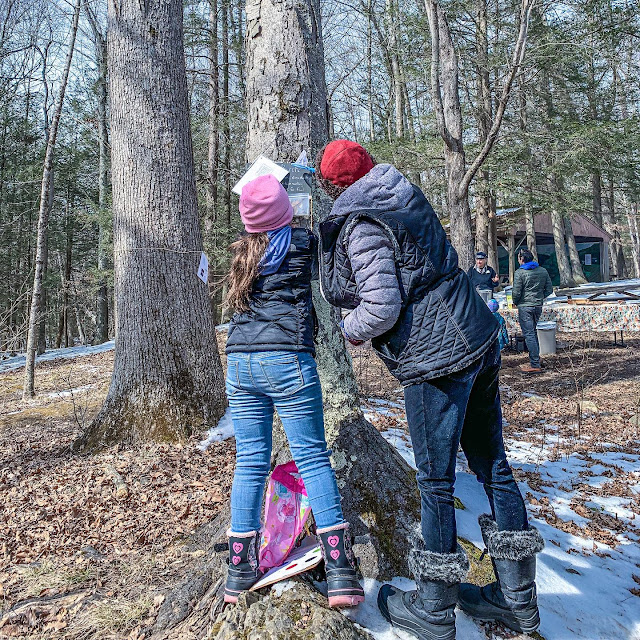About Sugar Camps
Historically, in the early spring, Native American families would leave their winter camps to set up a sugar camp. Men would build or repair wigwams and longhouses, while women carried rolls of bark to line the structures. Next taps were put into the trees. It has been documented that there could be up to 900 taps in one camp, with larger trees having one or more taps.
Once enough sap was collected, it was boiled down to granulated sugar using hot stones placed into hollowed-out tree trunks, most often, cedar. The sugar would be stored in bark containers and sometimes buried underground to protect and preserve the sugar.
Culinary and Medicinal Uses of Maple Sugar
Today, we see maple sugar on breakfast tables, used in gourmet dinners as a sweetener, and sold throughout the country in grocery stores and specialty shops. Native Americans honor the maple tree in ceremonies each year to ensure good maple harvests because they consider the sap a delicacy and a gift from the earth. Sometimes it was prepared as a cool drink with herbs in the warm months and made into a hot tea with a variety of roots, leaves, and bark in the winter. It was also used as a basic seasoning year-round. It was added to grains, fish, fruit, and vegetables, and mixed with dried berries. It was also eaten like candy for a burst of energy. Maple sugar was stored for well over a year making it a valuable source of food, flavoring, and sweetener.
Medicinally, records show that the Mohegans used the inner bark as cough medicine and the Potawatomi used the inner bark as an expectorant. The Iroquois made a decoction of maple leaves and used it as a wash for rashes. They also used an infusion of bark to treat sore eyes and blindness. Many Native American communities used it to sweeten bitter-tasting medicine.
 |
| A 1908 Roland Reed photo of an Ojibwe woman tapping for maple syrup |
Did You Know...
It takes at least forty years for a sugar maple tree to grow before it is big enough to tap.
On average, a tapped maple tree will produce ten to twenty gallons of sap per tap. Most trees have just one tap.
The first full moon during sap running season is called the Maple Moon or the Sugar Moon.
The sugar maple is one of America's favorite trees and more states have claimed it as their state tree than any other species.
Squirrels, whitetail deer, snowshoe hares, and moose feed on the seeds, twigs, and leaves of the sugar maple.
John Smith was among the first settlers that noted the Native
Americans' sugar processing and the fact that they used it for barter.
In 2001 baseball player Barry Bonds switched from an Ashwood Baseball Bat to one made of maple and hit 73 home runs!
The national champion for the sugar maple is located in Charlemont, Massachusetts. It is 112 feet tall with a diameter of 6.18 feet a crown spread of 91 feet with a total point count of 368.
A sugar maple tree in Lyme, Connecticut measured in 2012 measured 123 feet tall with a circumference of 18.25 feet and a crown spread of 86 feet with a total point count of 364.












.jpg)
.jpg)
.jpg)









.jpg)